 Backend Development
Backend Development PHP Tutorial
PHP Tutorial Example of monitoring and alarm configuration in PHP Tencent Cloud Server API interface docking
Example of monitoring and alarm configuration in PHP Tencent Cloud Server API interface dockingPHP Monitoring and alarm configuration example in Tencent Cloud server API interface docking
Overview:
In the management and operation of cloud servers, the configuration of monitoring and alarm is important to ensure the stability and stability of the server. Security is paramount. Tencent Cloud provides a rich set of API interfaces to enable monitoring and alarm configuration of cloud servers. This article will use PHP code examples to introduce in detail how to configure monitoring and alarms on Tencent Cloud.
-
API preparation and calling
First, we need to obtain Tencent Cloud’s API key information, including SecretId and SecretKey. In the code, we can configure the API's credential information in the following ways:$secretId = 'your_secret_id'; $secretKey = 'your_secret_key';
Next, we need to reference Tencent Cloud's SDK library file to call the corresponding API interface. Through the Composer tool, we can install dependent libraries:
composer require qcloudapi/php-sdk
Then, introduce the library file at the beginning of the code and instantiate the API interface:
require_once 'vendor/autoload.php'; use QcloudApiQcloudApi;
Finally, we can pass parameters through the API interface And call the corresponding method to implement our operations:
$config = [ 'SecretId' => $secretId, 'SecretKey' => $secretKey, 'RequestMethod' => 'POST', 'DefaultRegion' => 'ap-guangzhou', ]; $instance = QcloudApi::load(QcloudApi::MODULE_CVM, $config);
- Monitoring configuration
Tencent Cloud provides a rich set of monitoring indicators that can meet monitoring configurations for different needs. The following is a simple example that demonstrates how to configure CPU usage monitoring of a cloud server.
First, we need to set the monitoring period and frequency. In the code, we can configure it in the following way:
$monitorPeriod = 60; // 监控周期,单位秒,最大可设置为3600秒 $monitorFreq = 1; // 监控频率,单位秒,最小可设置为1秒,最大可设置为300秒
Then, we can add monitoring items through API calls:
$addMonitorParams = [
'namespace' => 'QCE/CVM', // 命名空间,云服务器的监控项命名空间为QCE/CVM
'dimensions.0.name' => 'unInstanceId', // 维度名称,指定云服务器实例
'dimensions.0.value' => 'ins-xxxxx', // 维度值,指定云服务器实例的实例ID
'period' => $monitorPeriod,
'metricName' => 'CPUUsage', // 监控指标名称,指定要监控的指标为CPU使用率
'unit' => 'Percentage', // 指标单位,CPU使用率的单位为百分比
];
$result = $instance->AddMonitor($addMonitorParams);In the above code, we pass the corresponding parameters that is Monitoring items can be added. In this example, we will monitor the CPU usage of the server and configure the monitoring period, frequency, indicator unit and other parameters.
- Alarm configuration
After the monitoring items are configured, we also need to set up appropriate alarm rules so that we can receive timely notifications when an exception occurs on the server. The following is a simple example that demonstrates how to configure an alarm to be triggered when the cloud server CPU usage exceeds the threshold.
First, we need to set the threshold for the alert rule. In the code, we can configure it in the following way:
$thresholds = [
[
'ruleName' => 'CPUUsageAlarm', // 规则名称,自定义名称
'period' => $monitorFreq * 3, // 统计周期,单位秒
'comparisonOperator' => '>', // 比较运算符,大于
'threshold' => 80, // 阈值,当CPU使用率大于80%时触发警报
'times' => 3, // 连续达到阈值的次数
'noticeWay' => ['sms', 'email'], // 通知方式,短信和邮件通知
],
];Then, we can add the alert rule through the API call:
$addAlarmParams = [
'namespace' => 'QCE/CVM',
'name' => 'CPUUsageAlarmRule', // 警报规则名称,自定义名称
'dimensions' => [
[
'name' => 'unInstanceId',
'value' => 'ins-xxxxx',
],
],
'thresholds' => $thresholds,
];
$result = $instance->AddAlarmPolicy($addAlarmParams);In the above code, we pass the corresponding parameter i.e. Alert rules can be added. In this example, we set up a custom alert rule. When the server's CPU usage exceeds 80%, the alert is triggered when it reaches 3 times in a row, and notifications are sent via SMS and email.
Summary:
This article uses PHP code examples to introduce how to perform monitoring and alarm configuration in Tencent Cloud Server API interface docking. By configuring monitoring items and alarm rules, we can monitor the running status of the server in real time, handle abnormal situations in a timely manner, and ensure the stability and security of the server. At the same time, Tencent Cloud's API interface provides a wealth of parameters and methods to meet monitoring and alarm needs in different scenarios.
The above is the detailed content of Example of monitoring and alarm configuration in PHP Tencent Cloud Server API interface docking. For more information, please follow other related articles on the PHP Chinese website!
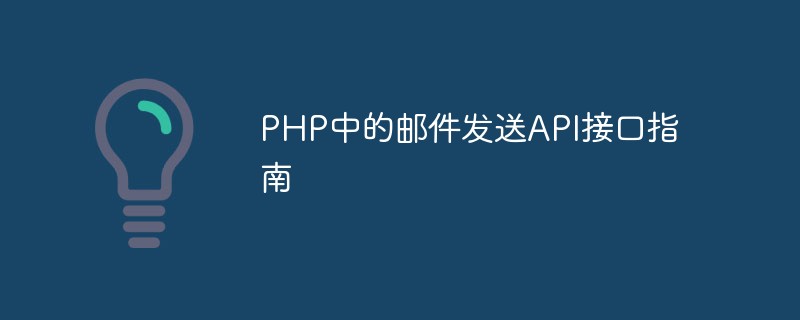 PHP中的邮件发送API接口指南May 21, 2023 pm 12:12 PM
PHP中的邮件发送API接口指南May 21, 2023 pm 12:12 PM随着电子邮件在我们日常生活中的普及,邮件发送成为了许多应用程序中必不可少的功能。PHP作为一种流行的Web开发语言,也提供了相应的邮件发送API接口。本文将为初学者和开发者介绍PHP中的邮件发送API接口,包括如何配置邮件服务器、如何使用PHP内置的邮件函数以及如何使用第三方邮件发送库。一、配置邮件服务器在使用PHP发送邮件之前,你需要首先配置一个SMTP服
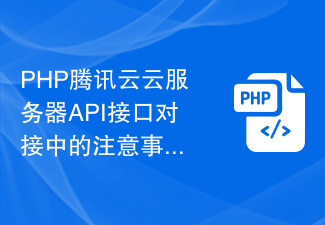 PHP腾讯云云服务器API接口对接中的注意事项和技巧Jul 06, 2023 am 10:13 AM
PHP腾讯云云服务器API接口对接中的注意事项和技巧Jul 06, 2023 am 10:13 AMPHP腾讯云云服务器API接口对接中的注意事项和技巧腾讯云作为国内领先的云计算平台提供商,其云服务器(CVM)产品受到了众多开发者和企业的青睐。为了更好地实现与腾讯云云服务器的对接,腾讯云提供了丰富的API接口,方便开发者进行各种操作和管理。本文将介绍在PHP环境下对接腾讯云云服务器API接口时需要注意的事项和一些技巧。同时,我们将给出一些代码示例,以便更好
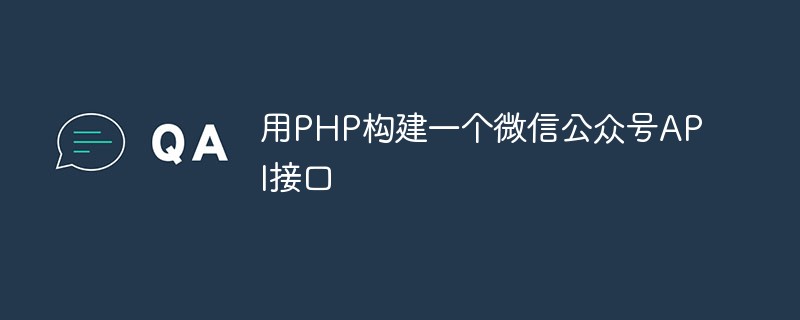 用PHP构建一个微信公众号API接口May 13, 2023 pm 12:01 PM
用PHP构建一个微信公众号API接口May 13, 2023 pm 12:01 PM在当今互联网时代,微信公众号成为了越来越多企业的重要营销渠道。想要自己的微信公众号实现更多的功能,常常需要编写相应的接口。本文将以PHP语言为例,介绍如何构建一个微信公众号API接口。一、前置准备在编写微信公众号API接口之前,需要开发者拥有一个微信公众号的账号,并且在微信公众平台中申请开发者接口权限。申请成功后,可以获取到相关的开发者AppID和AppSe
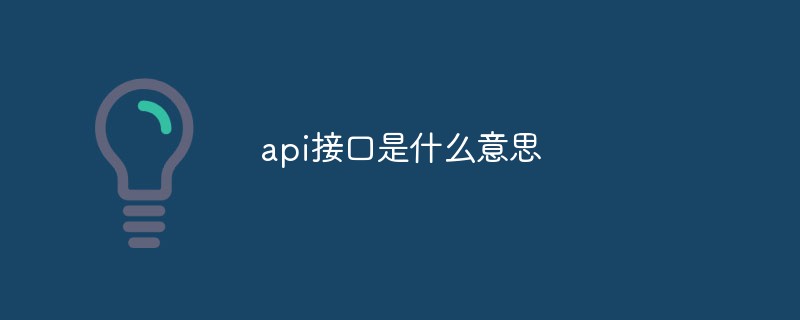 api接口是什么意思Mar 13, 2023 pm 03:15 PM
api接口是什么意思Mar 13, 2023 pm 03:15 PMapi接口的意思是应用程序编程接口,它是一些预先定义的函数,目的是提供应用程序与开发人员基于某软件或硬件得以访问一组例程的能力;良好的接口设计可以降低系统各部分的相互依赖,提高组成单元的内聚性,降低组成单元间的耦合程度,从而提高系统的维护性和扩展性。
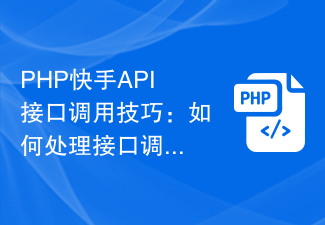 PHP快手API接口调用技巧:如何处理接口调用的频率限制Jul 23, 2023 am 10:40 AM
PHP快手API接口调用技巧:如何处理接口调用的频率限制Jul 23, 2023 am 10:40 AMPHP快手API接口调用技巧:如何处理接口调用的频率限制在开发过程中,我们常常需要使用快手的API接口来获取用户信息、发布内容等操作。然而,快手对于API接口的调用频率有限制,如果超过一定的次数,就会被限制或封禁。因此,我们在使用快手API时,需要注意如何合理地处理接口调用的频率限制,以避免给用户带来不便。本文将介绍一些PHP中处理快手API接口调用频率限制
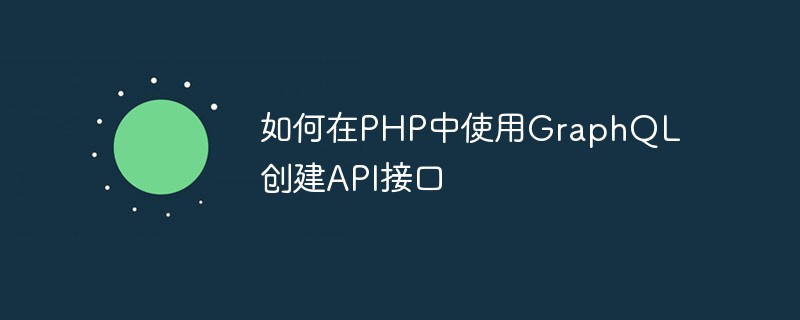 如何在PHP中使用GraphQL创建API接口May 10, 2023 pm 10:31 PM
如何在PHP中使用GraphQL创建API接口May 10, 2023 pm 10:31 PMGraphQL是一种新兴的API查询语言,它能够在客户端精确地指定需要返回的数据,从而减少服务器对于不必要数据的传输,提高网络请求和数据传输的效率。相较于传统的RESTful风格API,GraphQL更为灵活和高效。在这篇文章中,我们将探讨如何在PHP中使用GraphQL来创建API接口。安装GraphQL库在开始使用GraphQL之前,需要先安装Graph
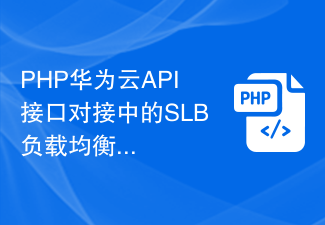 PHP华为云API接口对接中的SLB负载均衡与CDN加速配置示例Jul 05, 2023 am 08:22 AM
PHP华为云API接口对接中的SLB负载均衡与CDN加速配置示例Jul 05, 2023 am 08:22 AMPHP华为云API接口对接中的SLB负载均衡与CDN加速配置示例在进行PHP华为云API接口对接时,常常需要考虑到负载均衡和CDN加速的配置。本文将给出一个示例,介绍如何使用PHP代码配置SLB负载均衡和CDN加速。一、SLB负载均衡配置示例SLB(ServerLoadBalancer)是华为云提供的一种高可用的负载均衡服务。它通过将来自用户请求转发到多
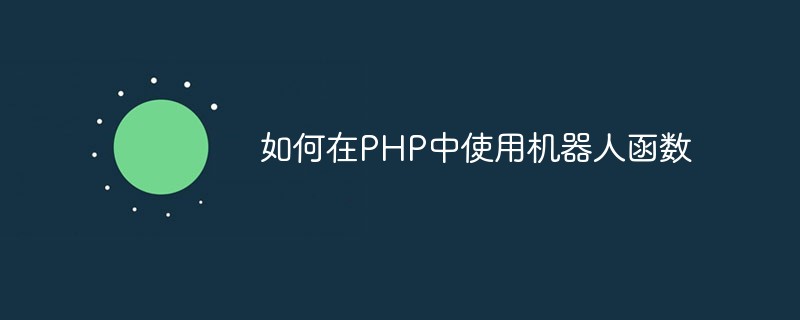 如何在PHP中使用机器人函数May 18, 2023 pm 10:00 PM
如何在PHP中使用机器人函数May 18, 2023 pm 10:00 PM最近,随着人工智能技术的快速发展,机器人技术也逐渐得到了广泛的应用,其中,机器人函数成为了PHP编程语言中一个非常实用的工具。本文将介绍如何在PHP中使用机器人函数。什么是机器人函数机器人函数指在PHP编程语言中用于模拟机器人行为的一组函数。这些函数包括move()、turn()等,可以让我们编写出模拟机器人运动、转向等相关操作的代码。在实际应用中,机器人函


Hot AI Tools

Undresser.AI Undress
AI-powered app for creating realistic nude photos

AI Clothes Remover
Online AI tool for removing clothes from photos.

Undress AI Tool
Undress images for free

Clothoff.io
AI clothes remover

AI Hentai Generator
Generate AI Hentai for free.

Hot Article

Hot Tools

SublimeText3 Chinese version
Chinese version, very easy to use

SublimeText3 English version
Recommended: Win version, supports code prompts!

MantisBT
Mantis is an easy-to-deploy web-based defect tracking tool designed to aid in product defect tracking. It requires PHP, MySQL and a web server. Check out our demo and hosting services.

Dreamweaver CS6
Visual web development tools

WebStorm Mac version
Useful JavaScript development tools




